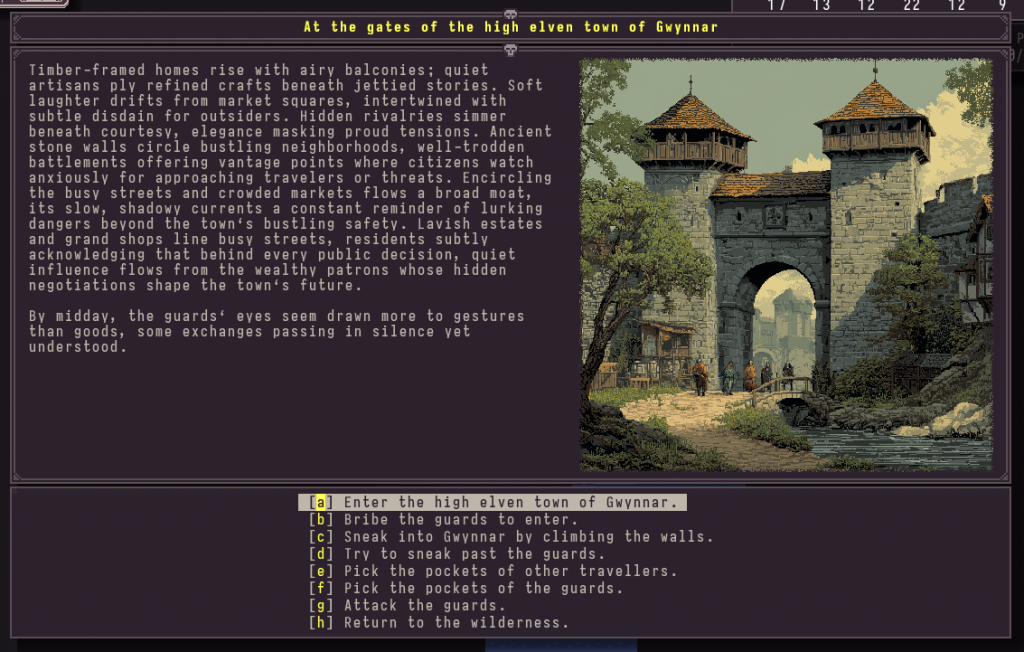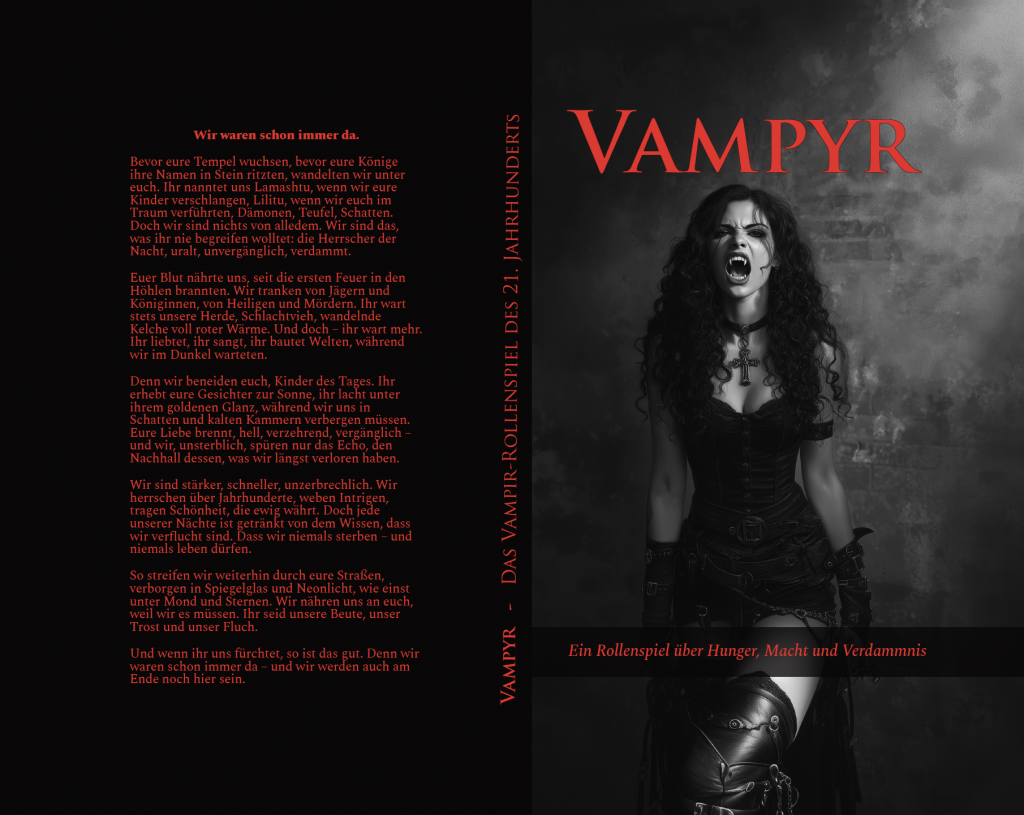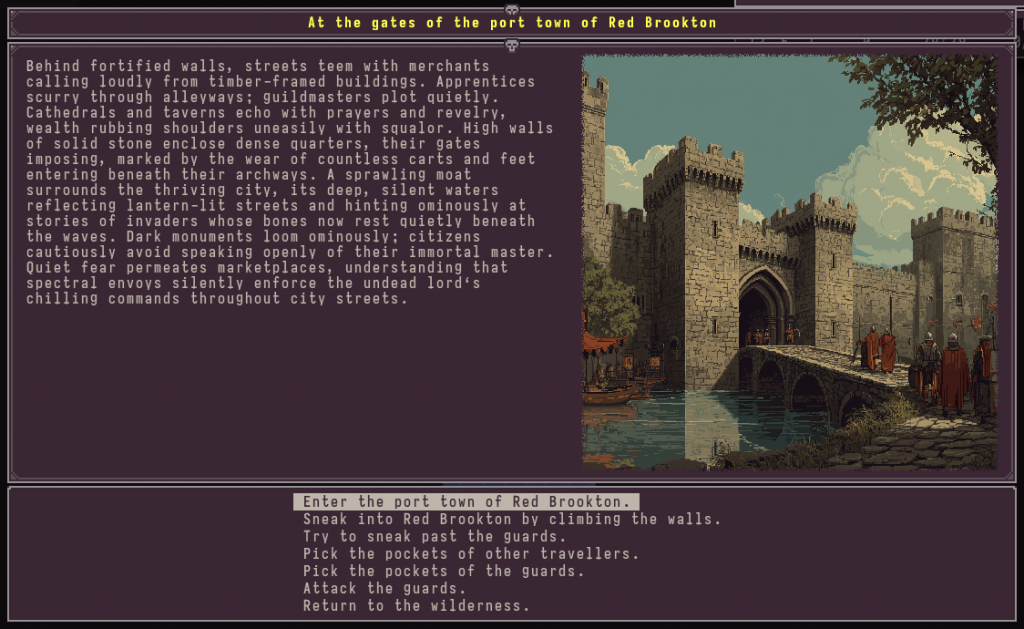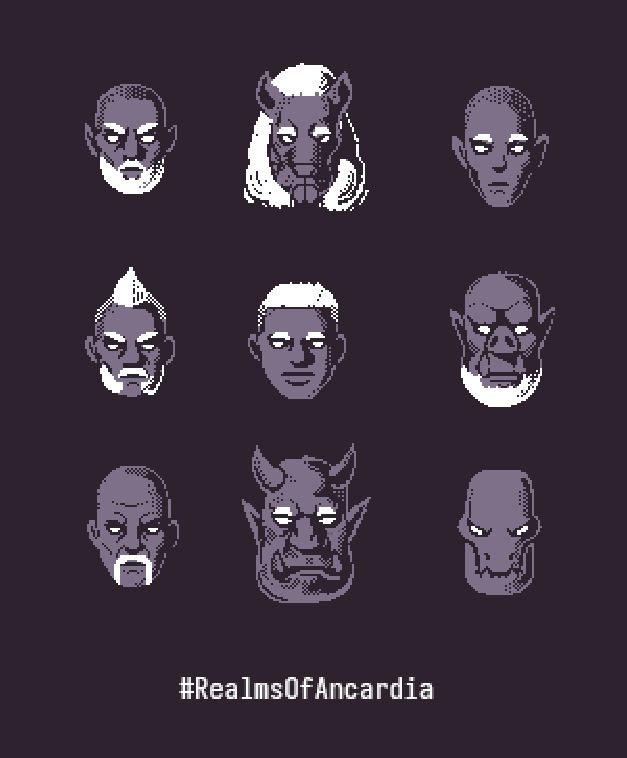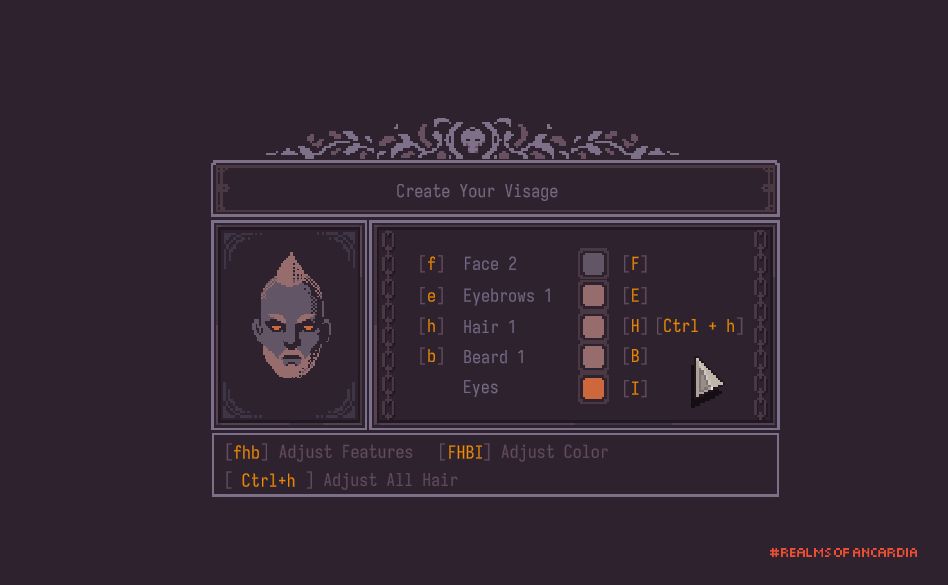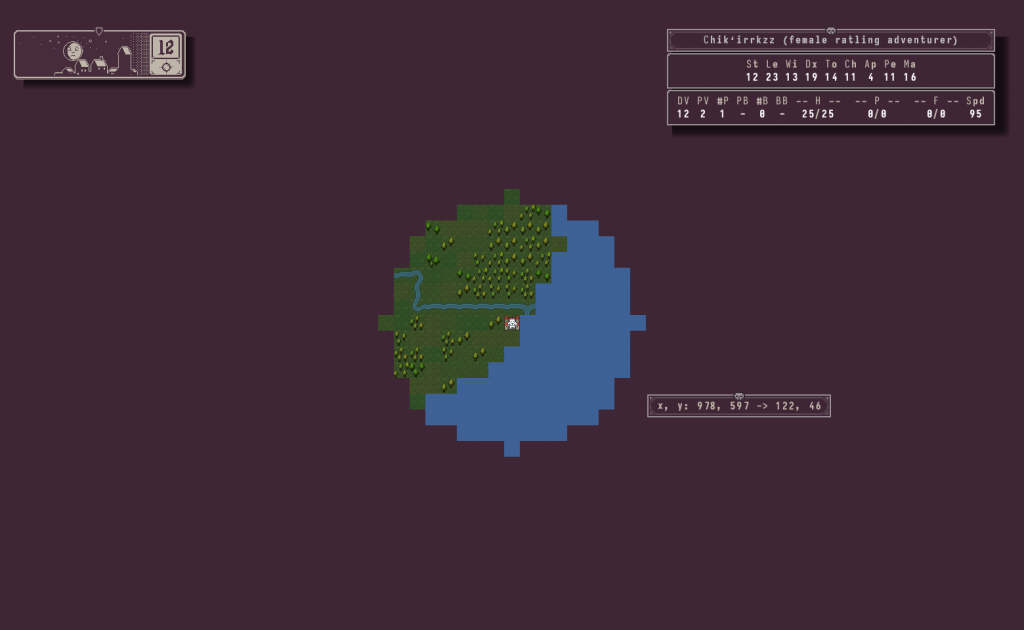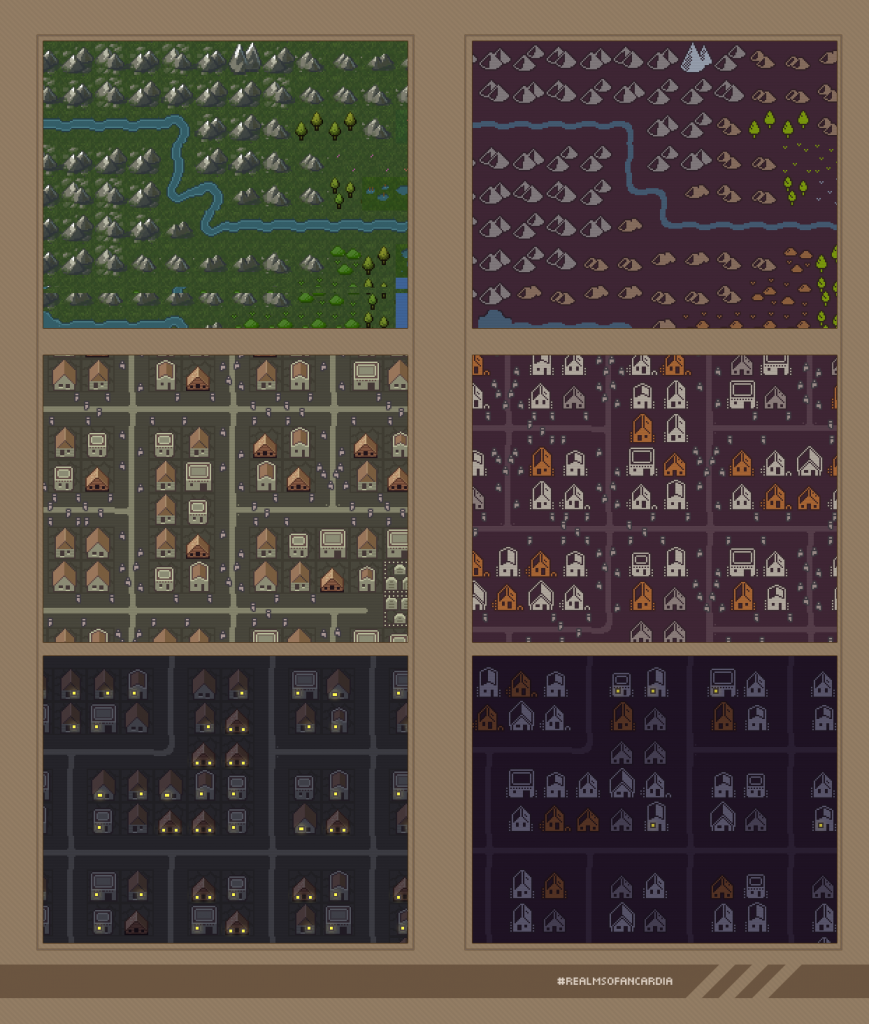First of all… wow, it’s already this special time of the year:
Merry Christmas days to all of you!!!
(or whatever else you decide to celebrate or not to celebrate –
I wish for love and peace for all of you!!!)
Enjoy a small glimpse into christmassy Ancardia:
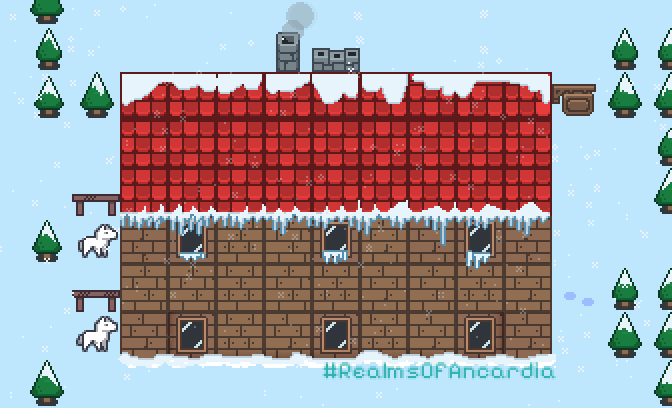
Now for the game dev content stuff…
Wow, a lot of time has passed since the last update. Sadly development was not as focussed as I had hoped due to many real life commitments. Still a lot got done. And Krys did truly marvelous things on the graphical side so this update will contain tons of graphical additions. Kudos to Krys for his amazing work… now I feel really pressured to catch up on the dev side 😉
Random wilderness encounters
The random encounter system for wilderness encounters on the surface world map has been activated. There are several hundred different encounters available depending on terrain type (and this later will be expanded by environment factors like vicinity to settlements, dungeons, etc.).
Encounters can be handled in various interactive ways, combat being a very typical way of coping with an encounter. Later on there will be lots of other kinds of wilderness encounters, like travelling merchants you can trade with, caravans you might want to deal with, patrols from cities seeking troublemakers and many others. But for now it’s all about random (combat) encounters.
If you evade or flee encounters they might remain on the map for some time so that you can run into them again (or they block passage or continue chasing you). After a while random encounters vanish – but this adds a nice level of detail to the world.
Encounter screen:
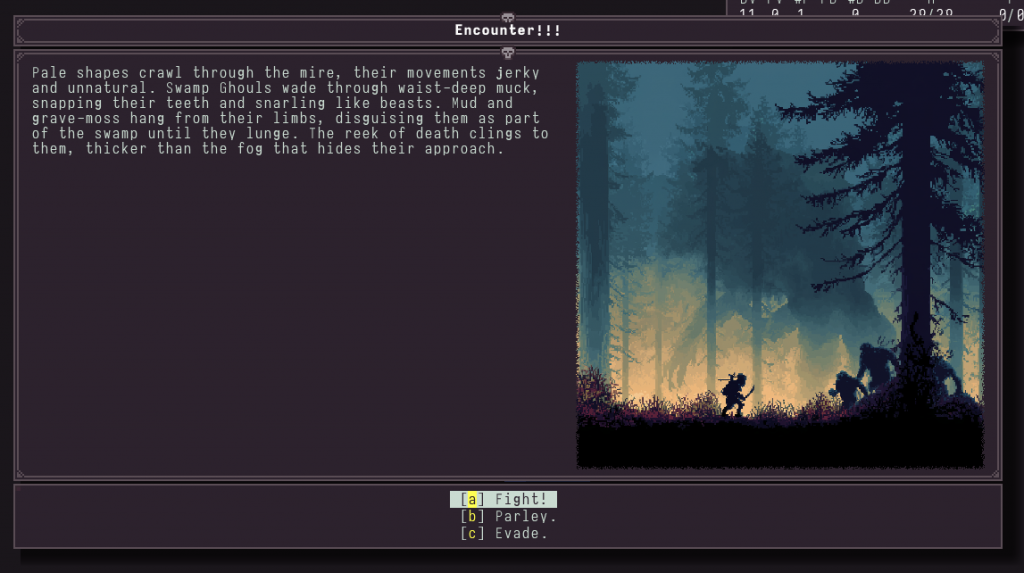
In total there already now is like 10+ options about to react to an encounter that might be presented to the player based on skills, talents, race and other factors. Mind you, all of them still need to be implemented but I am very much looking forward to the variety offered by the game.
A map with several random encounters still present:
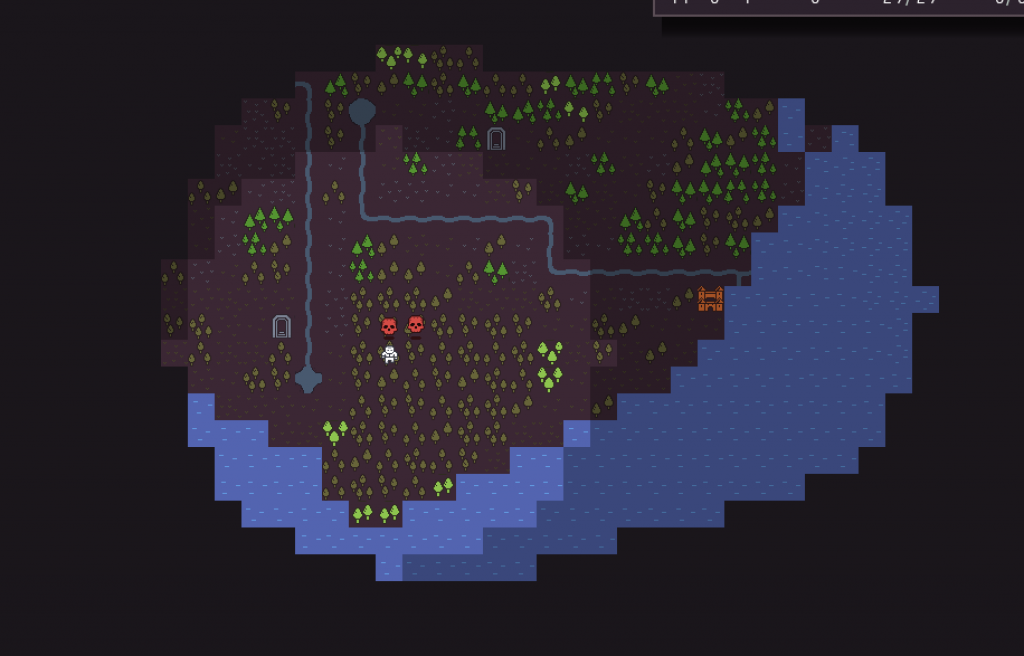
So you can evade encounters but they might remain on the map (see the red skulls) for a while before disappearing representing a prolonged threat, especially if for some reason you are in a hurry and trying to navigate difficult terrain.
Random encounters still are work in progress. There’s lots of stuff that still needs to be finished in regards to the actual combats. I hope that the next update will be a lot more complete in this regard.
Beautified character generation screen
The character creation screen has seen a glow-up.
Before:
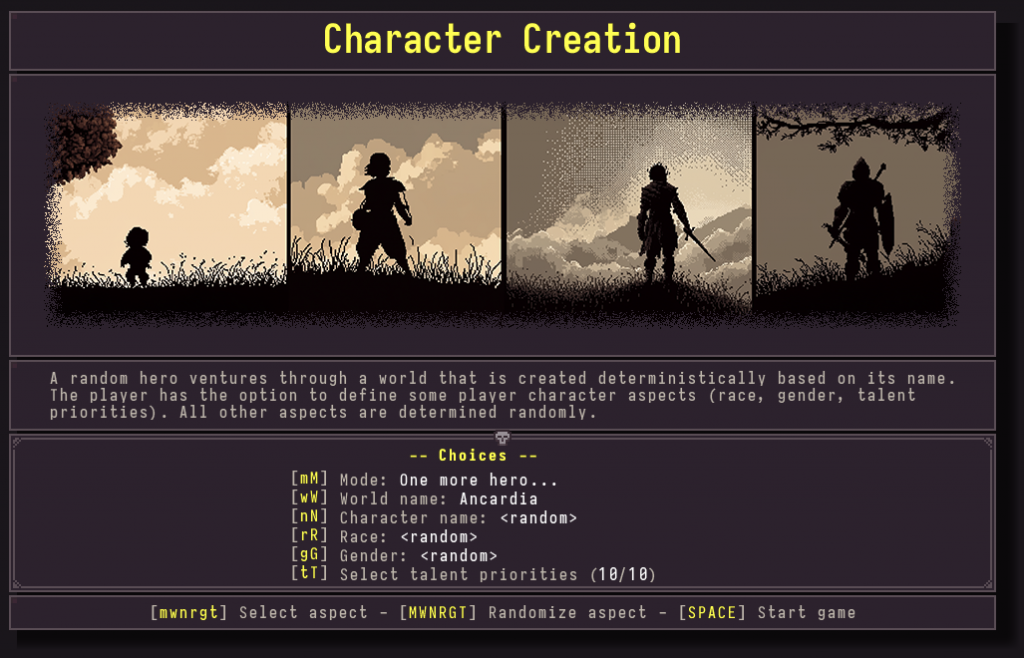
After:
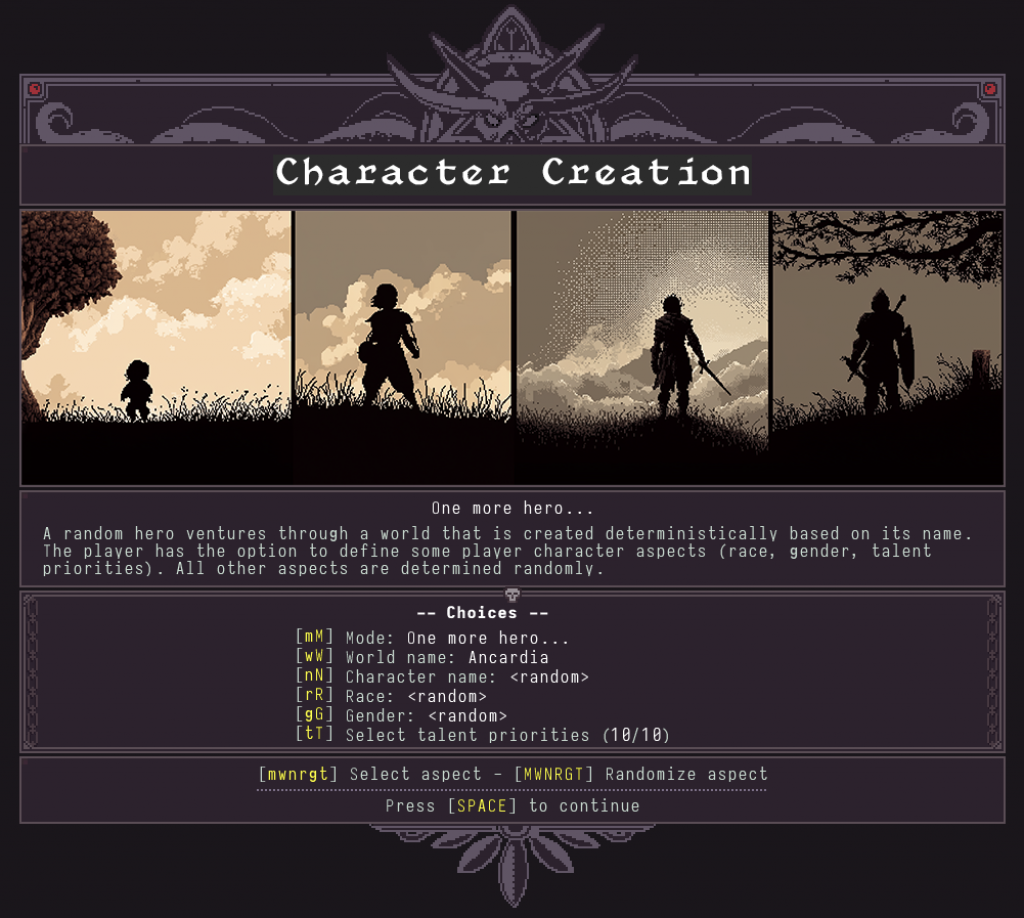
Krys has prepared a ton of these refinements and I will continue to add them over time.
Tons of graphics prepared
Krys prepared an amazing amount of graphical refinements, details and additions and I am quite pressed to implement all these wonderful things. The list below should give you a glimpse of how Realms of Ancardia will look and feel once it’s starting to be more complete. For now there are lots of fragments but IMHO they foreshadow a wonderful scenery for the future game. Here we go…
More decorations
Krys has designed dozens of decorative features for the game screens and windows, of which I will show only a few to get the feeling across we strive for.
Here is the updated status message window (not yet implemented):
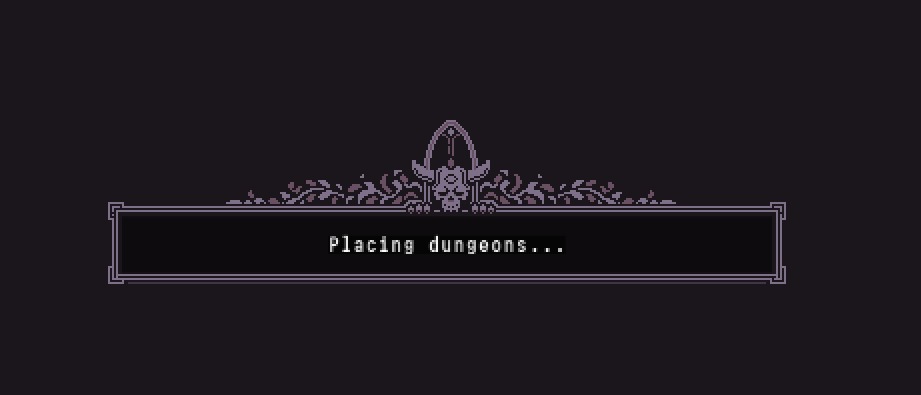
And generally we agree that the game needs a lot of skulls 🙂 Enjoy the close-up:

Besides skulls there are many other improvements pending, e.g. a much nicer look for the settlement names:
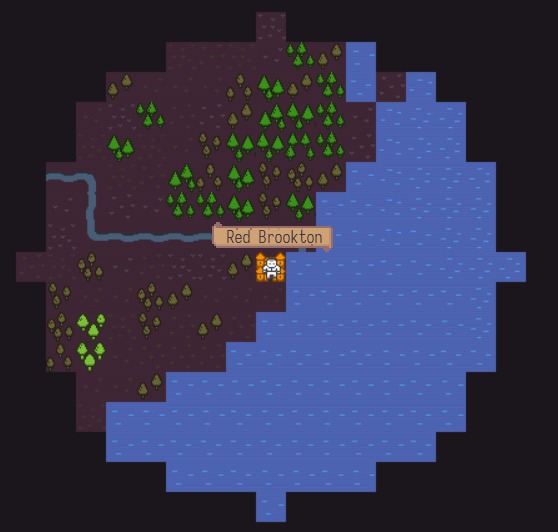
Personalized character portraits
Realms of Ancardia eventually will include a portrait builder for your character. Krys already has prepared a modular system with tons of graphical tiles for the various parts that make up a face and he also prototyped the actual portrait designer with color palettes and everything else. Very much looking forward to its implementation in the actual game as we also can use it for NPCs.
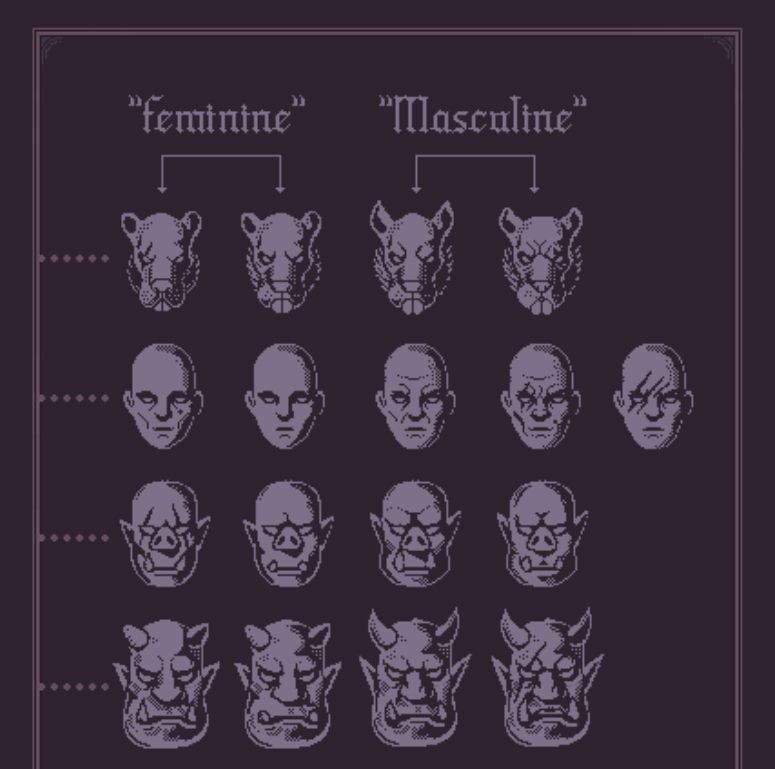
As you can guess from the image above Realms of Ancardia (at least initially) takes place in a pretty tough world with hard characters.
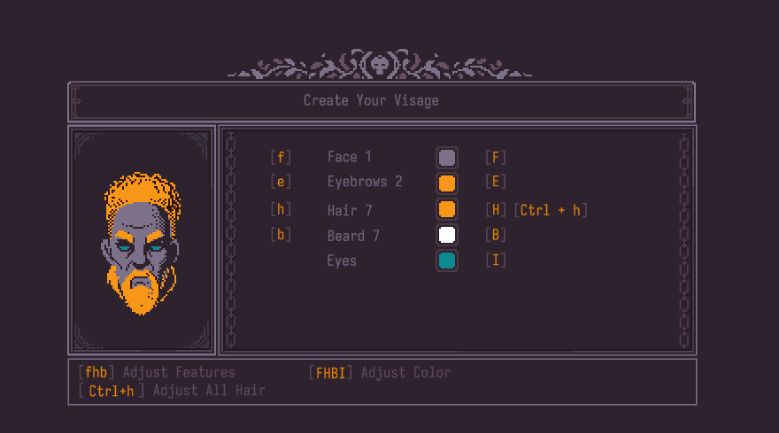
Above you can see the prototype for the character builder. It allows to customize lots of aspects of the portrait allowing for almost infinite possibilities.
Here you can see it in action:
Skill icons
Krys designed icons for all our skins. Beautiful icons. And they can be used both in a graphical size to adorn screens and in a smaller in-font version where they easily can run in texts.
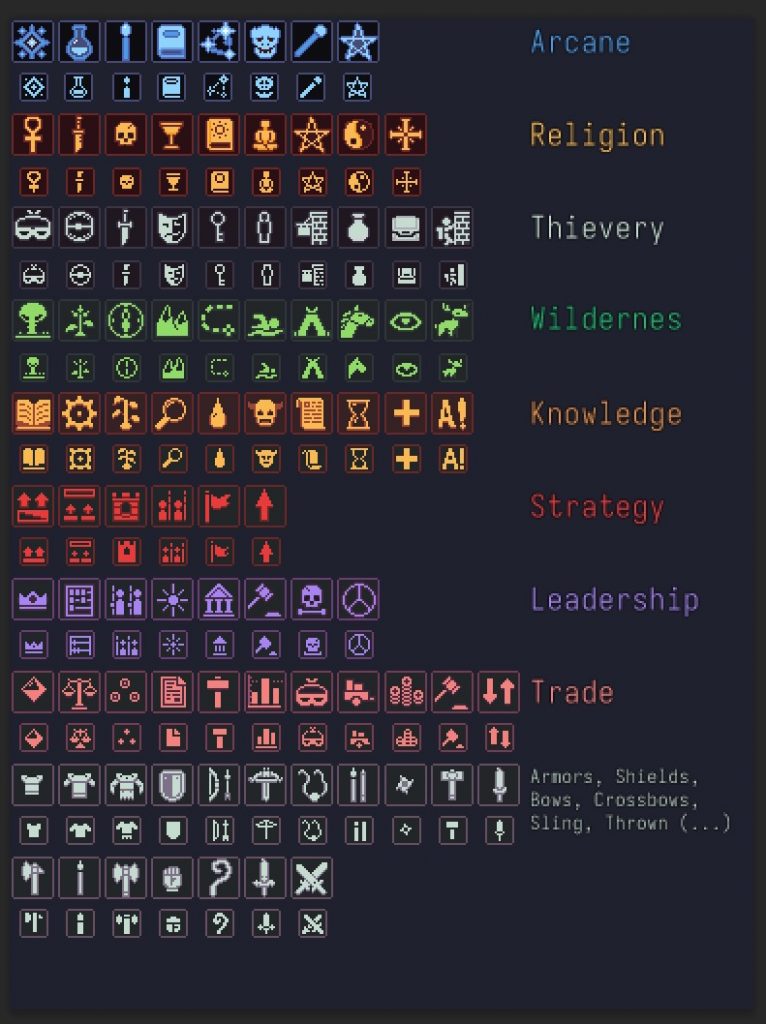
Standardization of the color palette
While working on the many icons, monsters, tiles, etc. Krys also defined a standard palette for the game so that it will have a coherent and unified look. I love the high standards he puts into the very basics of the game.

Item graphics
Next we get to icons. Like ADOM Realms of Ancardia will tons of items, some predefined, some randomly generated for each and every game. Krys has started to work on the graphics for the icons:
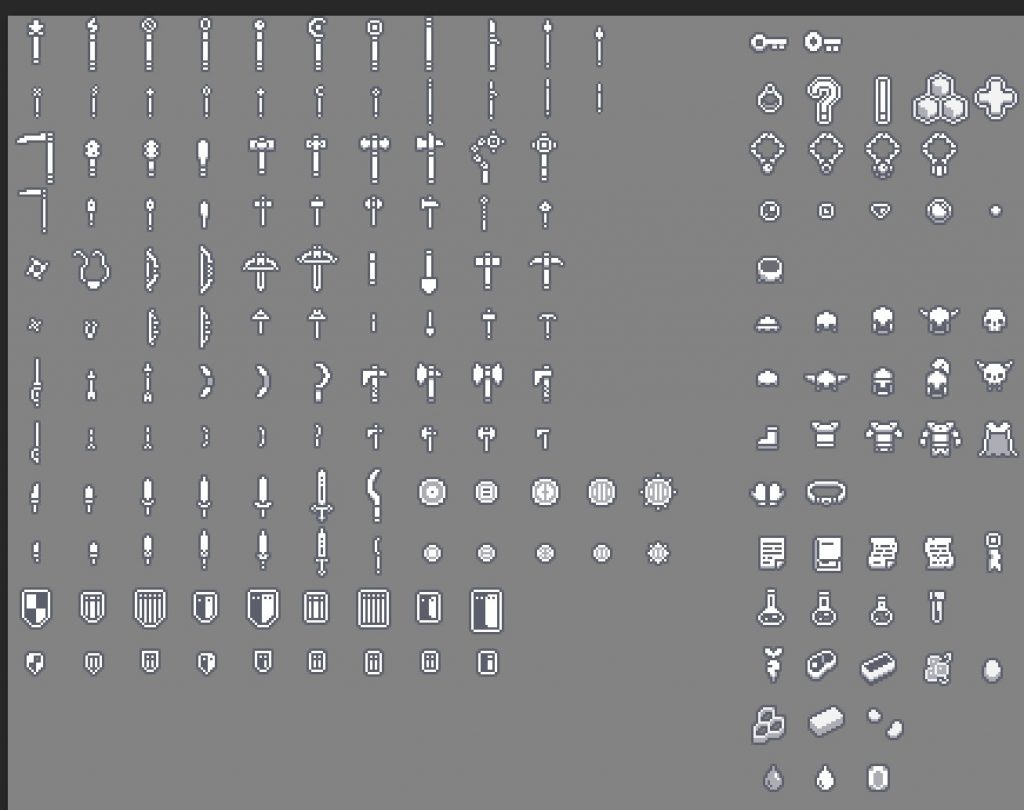

(they are all white because this allows us to color them at runtime BTW, based on materials, enchantments or whatever else strikes our fancy)
Monsters-in-arms
Having items means that we should show some of them. We have decided to go for a healthy mix, e.g. monsters will show weapons and shields to differentiate them a lot more. Here’s a sample:

Dungeons
Krys also already started working on dungeon tiles and setting up lots of features and extras. The following video gives you an impression (fair warning: all the videos are done in Krys’ Unity prototype which actually has a number of features my RoA engine does not (yet?) have – like the smooth scrolling and camera movement):
Naturally dungeons come to live with monsters and in this sample video you can see monsters with different equipment sets:
Krys also started working on special dungeons. Going from fire aspected dungeons in the following video…
…to a sample of how the tower of eternal flames or the temple of elemental fire might look like (should you be able to encounter them):
And as we were nearing the fire temple Krys also took at the old earth temple:
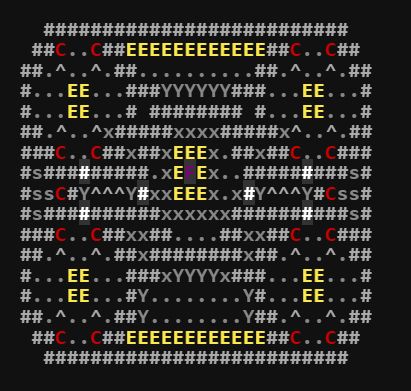
…and redesigned it for Realms of Ancardia:
Village people
As Krys was in full swing he proceeded to more detailed villages. Here you can see a sample of how a more detailed village environment might look like:
Improved cursor and tooltip handling
Krys experimented with fade-in/fade-out for tooltips and also worked on the cursor:
Wind?
Getting totally experimental here but maybe we will have wind…
Everything so far…
The following video shows a summary of many of the awesome things created by Krys – enjoy!
Introduced new header font
We now use a new header font for our dialogs. I think it’s beautiful and suits the mood of the game. Still we keep using our clean main text font because it’s so wonderfully readable.
Before:

After:

Beautified text input dialogs
The dialogs for text input have been greatly beautified. Both entering the world seed and the character name are affected by this:
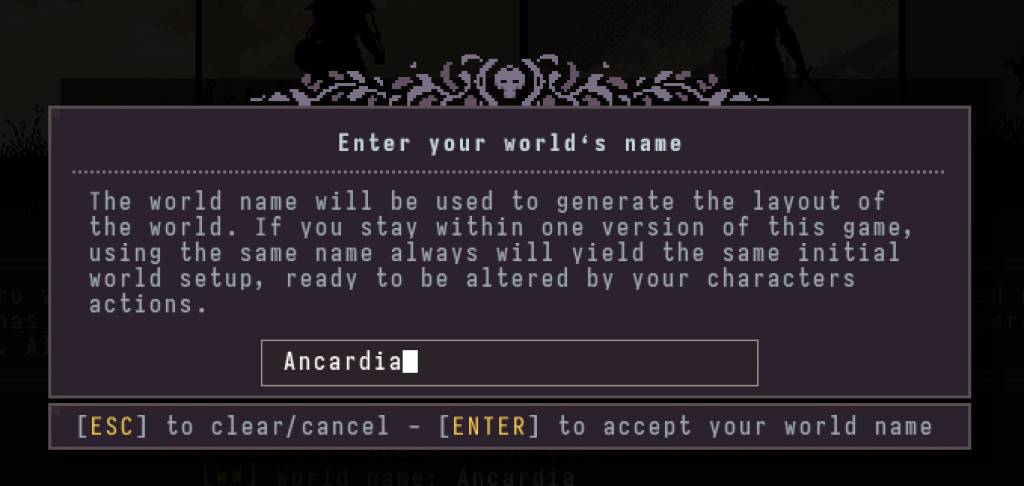
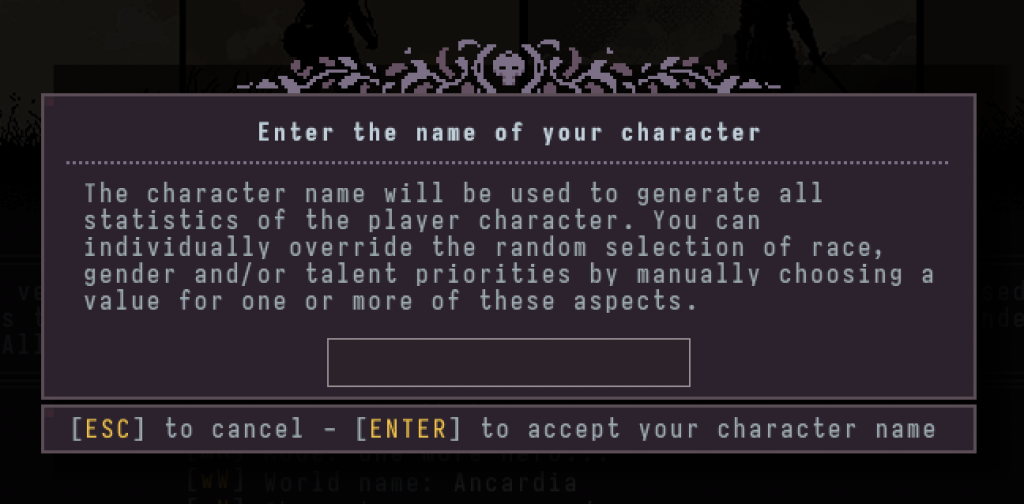
Miscellaneous minor changes and additions
- Implemented various caches for images and fragged border decorations. This greatly enhances UI fidelity because it reacts much faster now.
- Dialogs now darken the background so that they are easier recognizable.
- Added a means to display popup messages and close them by key or mouse.
- All beings now have a size.
- The possible genders of beings now are derived from available translations. If there are no translations for a specific gender, the gender is not available.
- Fixed various problems with the internal actor system. Despite this being the fourth time I am implementing my actor pattern again and again a ton of complex bugs creep into this system. Finding and fixing them took quite a while – nasty bugssssss.
Total size of the codebase after this week
- 51,679 LOC in 687 files for the actual Realms of Ancardia game
- 29,334 LOC in 468 files in my own underlying TBRLAPI framework library supporting my most recent roguelike games
- plus extra external configuration files, images, tilemaps, audio files, etc.
The running total is available here.
State of our internal ticket system
We use YouTrack to manage ideas and bugs that pop up. The listings are by no means complete – it’s more of a “don’t eventually forget to fix this bug / add that amazing feature” pipeline that gives a little structure to our development process without turning it into a managed project 😉
- 179 open issues in total
- 76 closed issues in total

